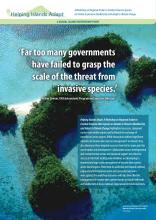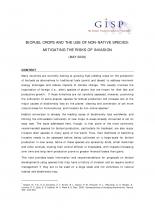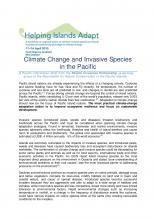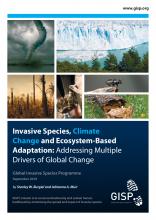Climate change and Invasive species in the Pacific, [paper presented at] a workshop on regional action to combat Invasive species on Islands to preserve biodiversity and adapt to climate change, 11-16 April, 2010, Hyatt Regency Auckland, New Zealand


Climate Change Resilience, BRB
Available Online
Pacific Invasive Species Partnership
2010
Pacific island nations are already experiencing the effects of a changing climate. Cyclones and severe flooding have hit Yap, Niue and Fiji recently. Air temperature, the number of cyclones and sea level are all predicted to rise, and changes in rainfall are also predicted across the Pacific (1). Forces driving climate change are beyond the control of island nations. Pacific islands, while constituting 0.12 per cent of the worlds population, release only 0.003 per cent of the worlds carbon dioxide from fuel combustion (2) . Adaptation to climate change should now be the focus of Pacific Island nations. The most practical climate-change adaptation action is to improve ecosystem resilience and focus on sustainable development.




